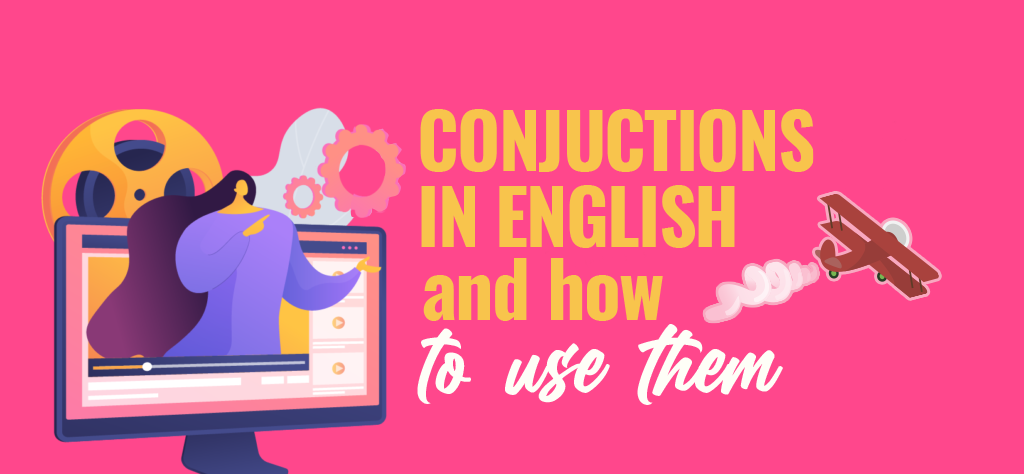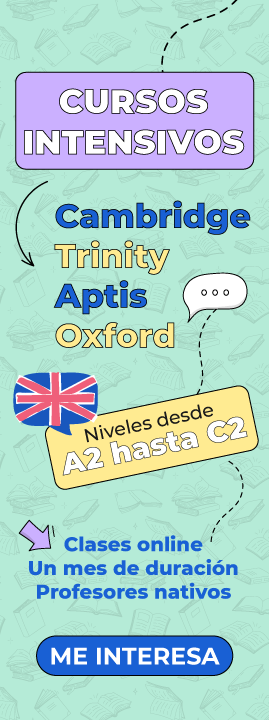Conjunctions in English and how to use them

What are conjunctions? These important connecting words are found in English and many other languages. There are three types of conjunctions. They include coordinate conjunctions, subordinate conjunctions, and correlative conjunctions.
ÍNDICE DE CONTENIDOS
Coordinate conjunctions are small, effective words that join independent clauses, dependent clauses, phrases, things, and elements in lists. By definition, conjunctions bring two separate things together and create transitions between different thoughts.
Coordinating conjunctions
In English, there are seven types of coordinating conjunctions including, for, and, nor, but, or, yet, and so all express contrast. The word “and” links unrelated nouns and clauses. It is then used to express a result, a reason, or to introduce a question.
And
We use the conjunction “and” to join similar terms.
Example:
- She has a bike and a car.
Ella tiene una bicicleta y un auto.
For
It is often used as a preposition, but it can also be used as a conjunction that is similar to the word because.
Example:
- Jill cried for she knew Jack was her only love.
Jill lloró porque sabía que Jack era su único amor.
Yet
However, it is versatile conjunction that expresses contrast.
Example:
- Galen is tall and clumsy, yet he’s great at sports.
Galen es alto y torpe, pero es excelente para los deportes.
But
We use the conjunction “but” to make a comparison or emphasize a difference.
Example:
- She bought a book but she didn’t read it.
Compró un libro pero no lo leyó.
So
We use the conjunction “so” to explain the outcome or consequences of something.
Example:
- Her friend was coming so she cooked a meal.
Su amiga iba a venir, así que preparó una comida.
Or
We use the conjunction “or” to designate the possibility of making a choice.
Example:
- You can drink beer or sweet juice.
Puedes beber cerveza o jugo dulce.
Nor
We use the conjunction “nor”; to mark the idea of adding in a negative sentence or proposition.
Example;
- He has not asked his father’s point of view nor his mother’s one
No ha preguntado el punto de vista de su padre ni el de su madre
Subordinating conjunctions
Subordinate conjunctions make it possible to relate two groups of words by making the second group of words a subordinate clause. The subordinate clause acts as an answer to the question posed in the main one. They are usually placed at the beginning of the main clause, but they can also be in the middle of the two clauses.
They are multiple, namely:
That, when, where, while, before, until, if, after, since, what, because, although, though, unless, as, why, which; whom, whose, how, who, then, as… as, such… as, etc.
Eso, cuando, dónde, mientras, antes, hasta, si, después, desde, qué, porque, aunque, a menos, como, por qué, cuál; quién, de quién, cómo, quién, que, como … como, como … como, etc.
Some examples
- He is the man whom, I want to see.
- Although he never figured out why Hanna winked on her way out the door.
- Él es el hombre a quien quiero ver.
- Aunque él nunca supo por qué, Hanna le guiñó un ojo al salir por la puerta.
Correlative conjunctions
These are conjunctions that are used in pairs, in groups of two terms. They are similar to coordinate conjunctions in that they link words that have a close meaning.
- Either…or, neither…nor, not only…but also, both…and.
O … oro, ni ni, no solo pero tambien, ambos y.
Examples
- Either…or, either he or I am able to do the job.
O… o: O él o yo podemos hacer el trabajo.
- Neither…nor: Neither Rodney nor Paul made the varsity team this year.
Ni … ni: Ni Rodney ni Paul llegaron al equipo universitario este año.
- Not only…but also: It was not only unkind but also untrue.
No solo … sino también: no solo fue cruel sino también falso
- Both…and: Selena both speaks German and French well.
Ambos… y: Selena habla bien alemán y francés.
There are other words like nevertheless, however, meanwhile and indeed, that can be used as conjunctions, to join two words or sentences.
Examples:
- I don’t know anything against the man, nevertheless, I don’t trust him
- I don’t know how he is going to pay back the money he has borrowed, however, that is his business, not mine.
- No sé nada contra el hombre, sin embargo, no confío en él.
No sé cómo va a devolver el dinero que pidió prestado, sin embargo, ese es su negocio, no el mío.
Other ways to connect sentences
In some cases, prepositions are used:
- At the farm, they gave us cooked potatoes with a lots of soup.
En la finca nos dieron papas cocidas con mucha sopa.
We can also join sentences using punctuation like commas, semi-commas, or colonists.
Examples:
- I looked around the room, Aja was working, Gilles was reading, and Sarah was sleeping (commas).
Miré alrededor de la habitación, Aja estaba trabajando, Gilles estaba leyendo y Sarah dormía (comas).
- Jesinta doesn’t work hard, she is incapable of hard work (semi-commas).
Jesinta no trabaja duro, ella es incapaz de trabajar duro (semicomas).
- He kicked open the door, a revolver in his hand: a dead man lay on the floor (colons).
Abrió la puerta de una patada, con un revólver en la mano: un hombre muerto yacía en el suelo (colonos).



